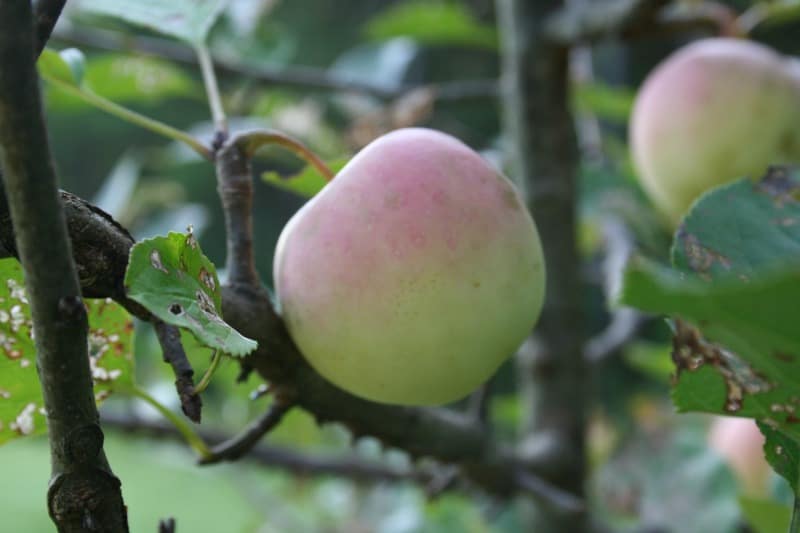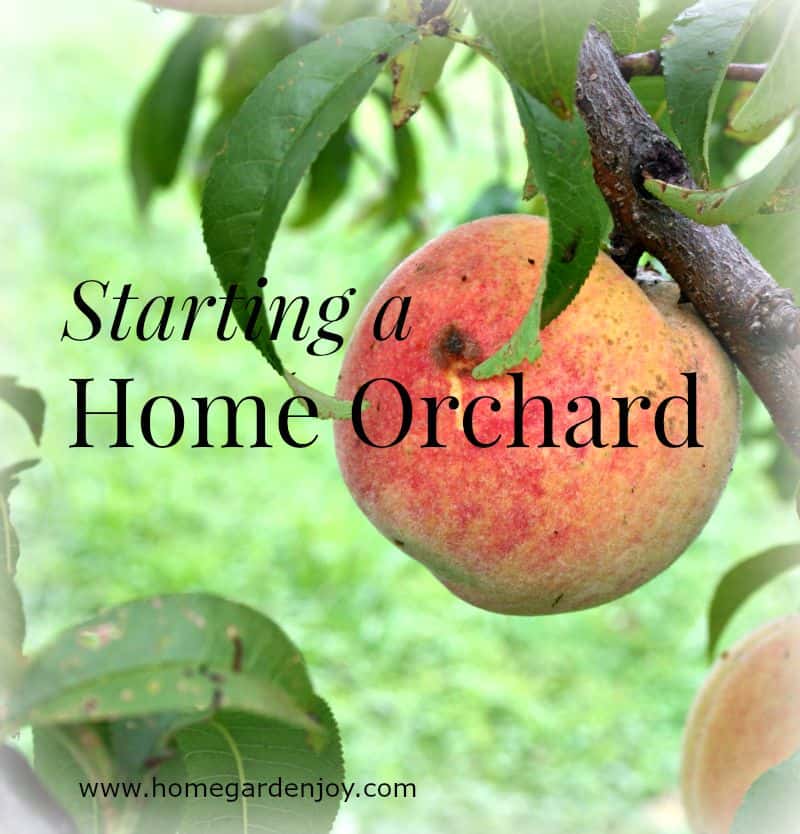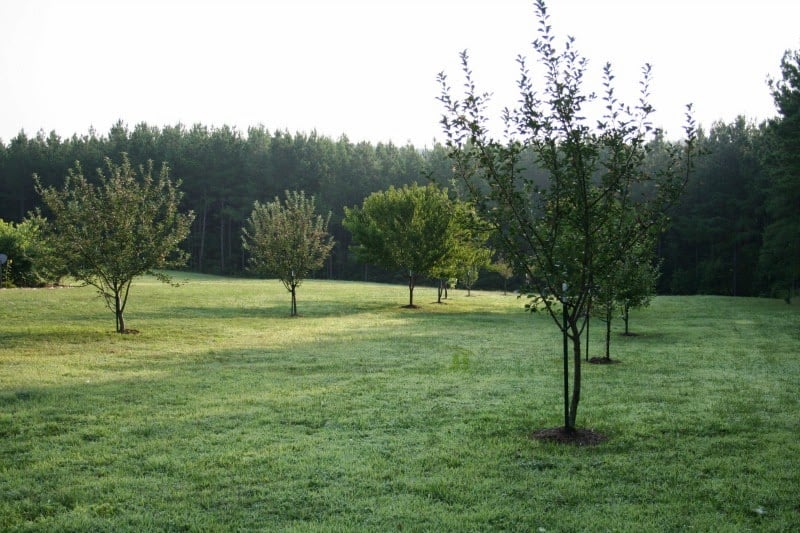I never thought that one day, I’d be starting a home orchard. If you have ever wanted to grow fruit in your backyard, starting a home orchard and growing apples, pears, peaches and more is possible.
When I lived on Long Island, New York, I dreamed about owning a farm. In my dreams, I owned an old farm, one that had been settled long ago. It had a dusty old barn filled with mysterious shadows and a beloved farmhouse with creaky floorboards. Always, always in my dreams, there were two things: animals in the farmyard and an orchard producing abundant fruit from gnarled old apple trees.

- Some fruit trees need a particular species of tree to pollinate their blossoms. Pollinating trees must be planted in proximity to others. We chose Lodi and Golden Delicious as our apple pollinators, and planted them at the corners of the apple section of the orchard so that the central Jonathan and Winesap trees would receive the benefits of cross pollination.
- Fruit trees take years to mature to the point where they can bear fruit, but if you start with mature trees, you can greatly shorten the time to benefit from your work.
- Trees are grown in three sizes: dwarf, semi-dwarf, and standard. The sizes refer to the height of the tree, not to the fruit. A dwarf tree produces full-sized fruit and is easier to care for because you can more easily reach the branches to spray, prune or harvest fruit.








[…] we planted the fruit orchard trees in 2007, they came as bare root sticks called whips (I think) from the Arbor Day Society. This is […]